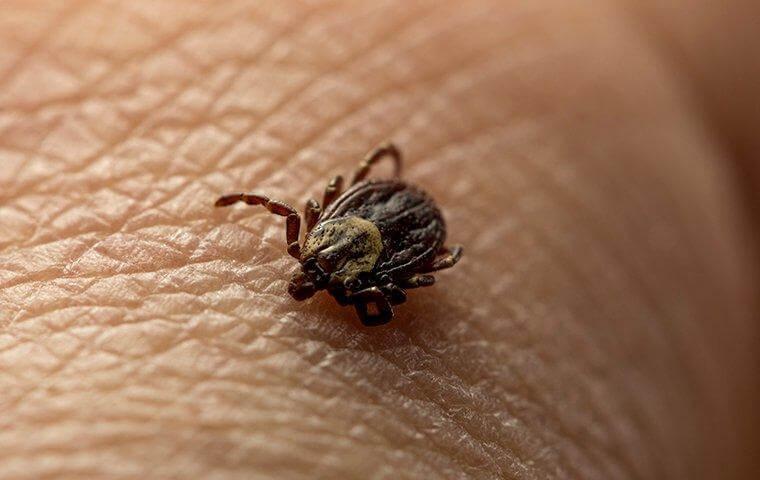Do you ever get tunnel vision, where you cannot pay attention to anything but what is right in front of you? If you do, don’t worry, this happens to everyone. It can even be helpful in certain situations, like if you have to focus all of your attention on driving to avoid getting into a wreck. Where it is not helpful is when you are spending time outdoors. If you are not carefully aware of your surroundings, you could fall victim to a tick attack. How can you avoid a tick attack? You could spend the rest of your life carefully examining each blade of grass on your property, or you could follow the advice of an expert. Here is how our experts suggest you prevent and avoid ticks on your San Antonio property.

Common Ticks In San Antonio
Texas has a wide range of tick species. Here in San Antonio, we have American dog ticks, deer ticks, brown dog ticks, black-legged ticks, spinose ear ticks, and many more. We even have a tick named after our state, the Lone Star tick. Although slightly different in appearance, all ticks have a few things in common. For one, they all have eight legs, just like spiders. Ticks can be anywhere from a millimeter long to upwards of 15 mm in length. When full of a blood meal, a tick can grow to be five times its normal size.
Out in nature, ticks will hide in tall grass and in other thick greenery, waiting for prey to roam by. Because ticks cannot fly or jump, they are required to stretch out their front legs and hope their prey comes close enough for them to transfer onto them. Once on a host, ticks will then begin feeding by burrowing their head deep under their victim’s skin. It isn’t until they are full that they will detach and move away.
How Dangerous Are Ticks?
The bites of ticks themselves are not what make ticks dangerous, it is what their bites can contain that make them the threat they are. If you didn’t know, ticks are hugely responsible for the spread of Lyme disease, a disease that can cause fatigue, rashes, achy joints, headaches, sensitivity to light, and cognitive decline in affected individuals. In addition to Lyme disease, ticks have also been known to carry and transmit Anaplasmosis, Bourbon virus, Ehrlichiosis, Colorado tick fever, and a number of other dangerous conditions.
If you find a tick on your skin, it is highly recommended that, after safely removing it, you store it in a sealed plastic bag in the freezer. As weird as this may sound, it might save you a whole lot of unneeded discomfort in the long run. How? Because the only way for doctors to be sure if you have Lyme disease or not is by examining the tick that bit you. Without knowing what strain of the disease you have, treatment can sometimes be near to impossible.
How To Control Ticks Around Your Yard
If you are tired of dealing with ticks around your property, here are some prevention tips the experts recommend.
- Keep your grass cut short.
- Trim back shrubs and other greenery on your property.
- Wear lighter-colored clothing when traveling outdoors.
- Tuck your pant legs into your socks.
- Avoid roaming into high grass or through other areas you suspect ticks might be.
The Best Way To Deter Ticks From Your Yard
For a better way to keep your yard free of ticks, let the experts here at Family Pest Control help. Our team of qualified pest technicians is equipped with the knowledge and treatments needed to give your yard the best chances of staying tick-free year-round.
Contact us today to find out how our tick control can benefit you and your family.

